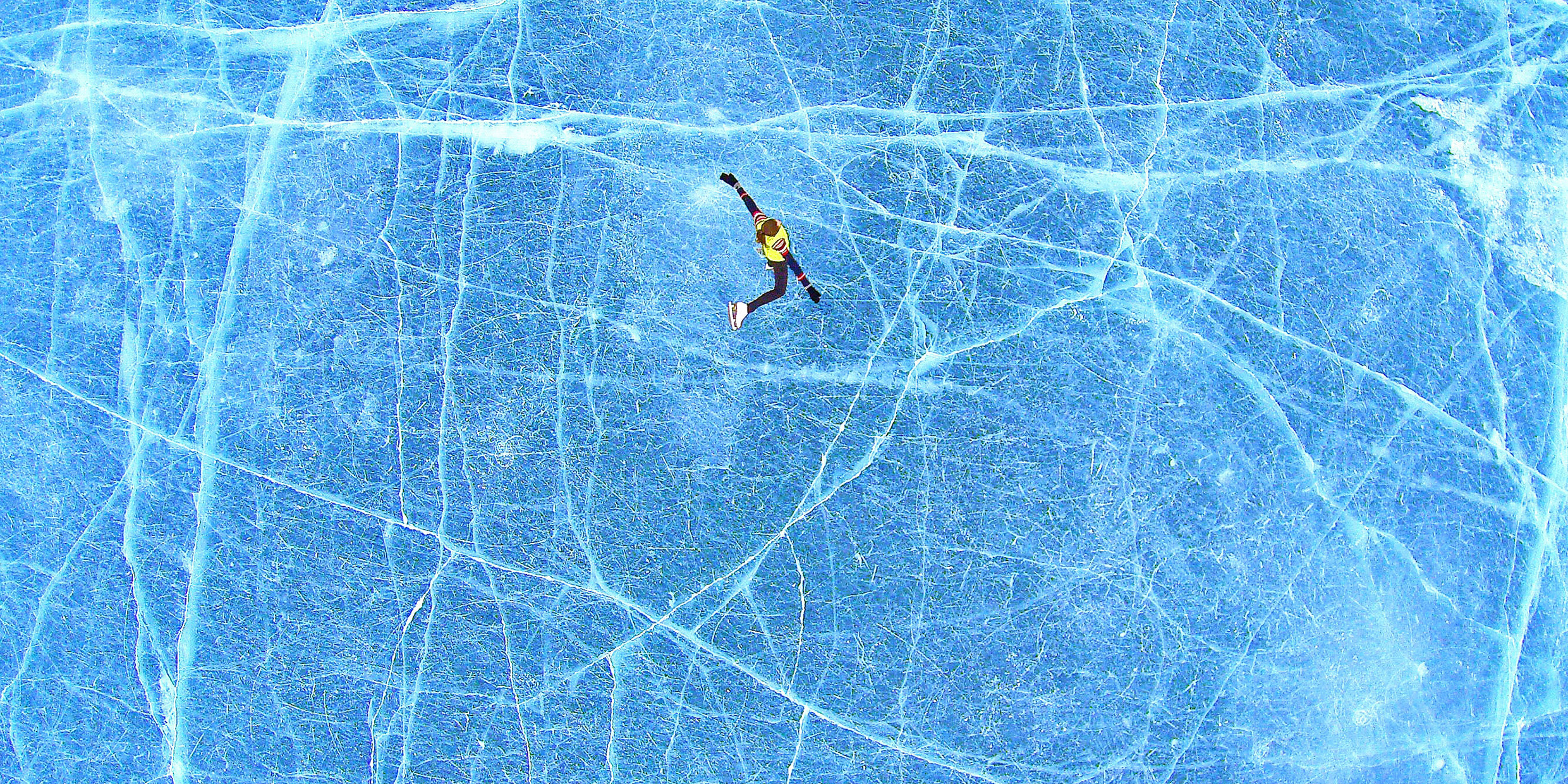Originally published 27 January 1986
It has been a fine winter for skating. Cold, snowless days have given us lots of smooth black ice. I have spent many pleasant hours skating the ponds near my home in Easton.
Curious stuff, ice. By the standard of other substances the properties of ice are bizarre; yet it is so perfectly suited to our purpose that if it didn’t exist we should have to invent it.
In school we learned that with few exceptions the solid phase of matter is more dense than the liquid phase. Water, alone among common substances, violates the rule. As water begins to cool, it contracts and becomes more dense, in a perfectly typical way. But about four degrees above the freezing point, something remarkable happens. It ceases to contract and begins expanding, becoming less dense. At the freezing point the expansion is abrupt and drastic. As water turns to ice, it adds about one eleventh to its liquid volume.
This extraordinary fact, as every schoolchild knows, is portentous with meaning. It means that ice floats on liquid water, rather than sinks. It means that ponds freeze from the top down, rather than from the bottom up. It means that life in the pond can survive the winter. It means I can skate.
Molecules and honeycombs
The reason for this anomalous behavior of water can be found in the structure of the ice crystal, and ultimately in the shape of the water molecule.
The two hydrogen atoms in a water molecule are attached to the oxygen atom in such a way that the angle between them is 104.5 degrees. That sort of angle insures that when water molecules bond to form a crystal they do so in a hexagonal pattern. The hexagonal structure of ice is the basis for the six-sided snowflake. It is also the reason that ice floats.
In the crystalline lattice of ice there is a good deal of empty space. Between rows of molecules there are open six-sided shafts like the empty cells of a honeycomb. It has long been known that the hexagonal geometry of the honeycomb allows the bee to enclose a maximum of space with a minimum of wax. If the bee constructed square cells, for example, it would require half again more wax to build cells of an equal volume. The lightness of ice is related to the same space-filling efficiency of the hexagon that is used to advantage by the honeybee.
Because of the spaciousness of the ice crystal, molecules are more loosely packed in frozen water than in the liquid. When ice melts, the breakdown of the crystalline structure allows molecules to fill some of the empty space.
The geometry of the honeybee’s comb is the product of fortuitous evolution, but the six-fold symmetry of ice was built into nature from the first moments of creation. The way water molecules bond together is intrinsic to hydrogen and oxygen atoms. That special angle of 104.5 degrees was part of the primordial architecture of matter.
Intricate alliances
Some people think of matter as rather dull stuff. Philosophers and theologians scorn it. But it seems to me there is nothing in nature richer in potential than “base” matter. The deeper science delves into the heart of the atom, the grander are the vistas of possibility that unfold before us. The laws of atomic matter are subtle and lush. Atoms have a built-in rage for intricate alliance. When the first material particles condensed from the radiation of the Big Bang, already it was certain that ice would float. And perhaps it was already inevitable that somewhere, sometime, there would be someone to skate.
The curious lightness of ice is only one of the anomalous properties of water. The fact that water freezes and boils within the range of temperatures and pressures commonly found on earth is atypical. The heat capacity of water and the latent heats of fusion and vaporization are unusually high. Of all liquids, water comes closest to being a universal solvent and it has one of the highest surface tensions. All of this is part of the intimate connection between water and life. Add the uncommon slipperiness of water in the solid phase (which I have enjoyed all winter) and you have a substance that is auspiciously unique.
The slipperiness of ice results from the fact that at the pressure produced by the slim blade of my skate, ice melts, even on a cold winter day. It is on a thin lubricating film of meltwater that I glide across the pond.
I particularly like to skate alone at night under the stars, when the unusual thermal properties of ice and my own weight cause the pond to thunder and groan with unearthly sounds. There is a spaciousness in those night sounds, like the spaciousness of ice that lets it float. It is a good space in which to reflect on the mystery of why things are as they are.


